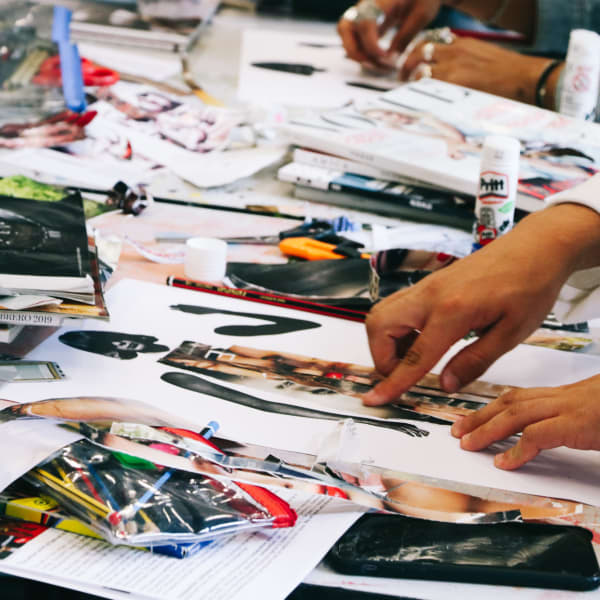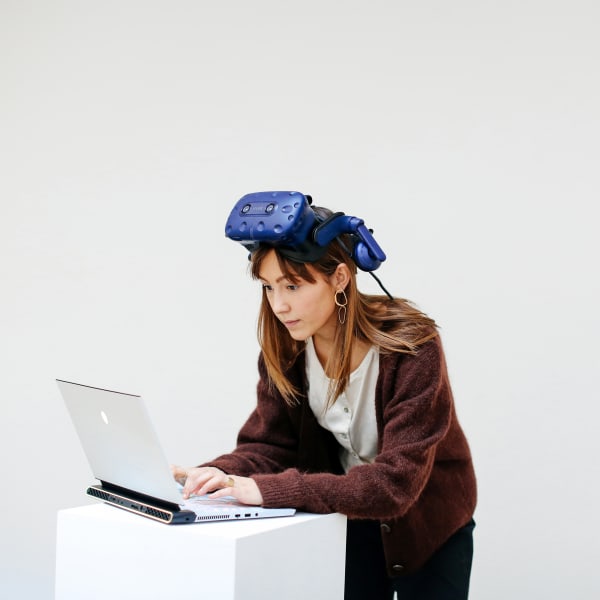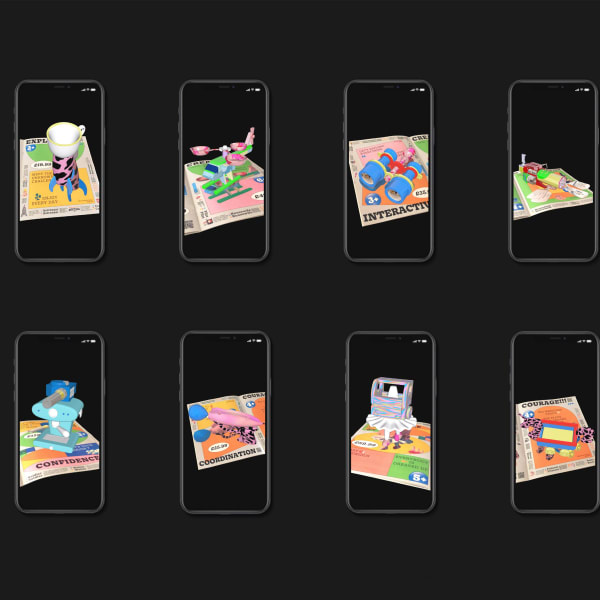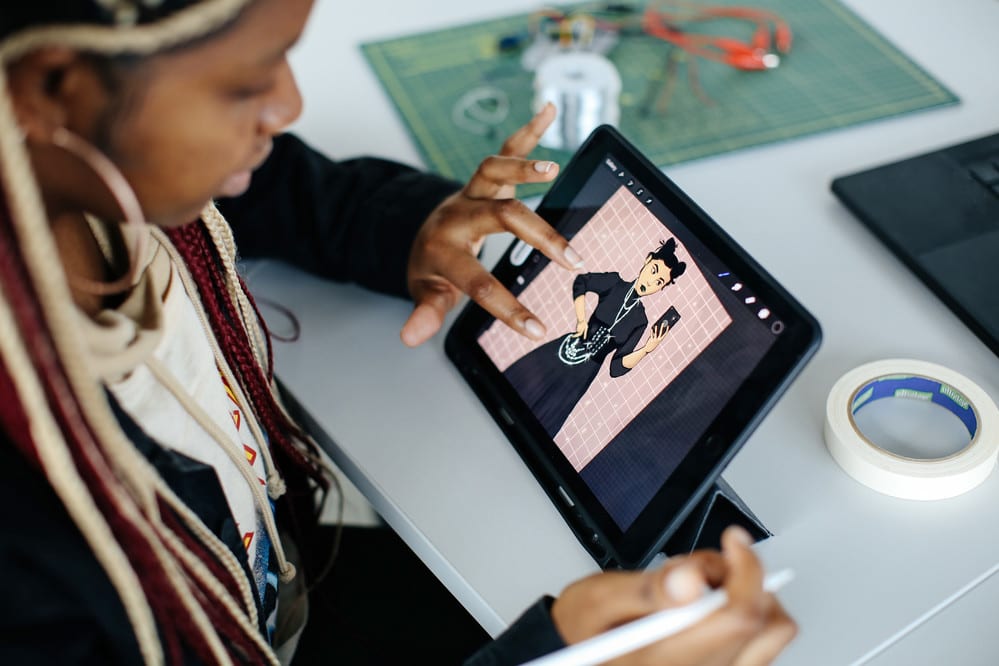
The future of digital fashion design
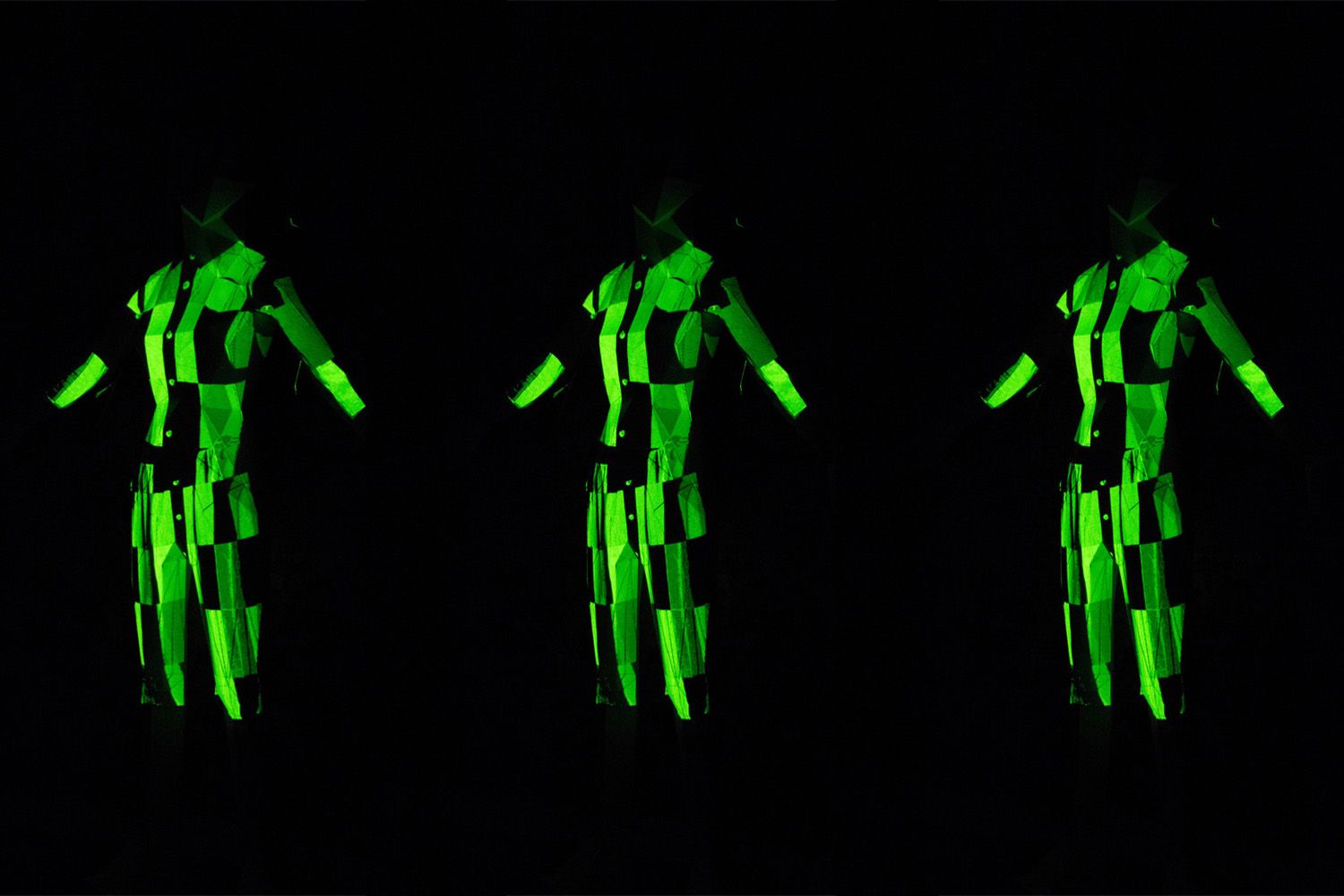
- Written byCarys Thomas
- Published date 15 August 2022

According to the CEO of the British Fashion Council, Caroline Rush, around 10-15% of our wardrobes could become digital in the future.
Digital fashion, defined as the visual representation of clothing in the digital realm, offers a solution to many of the issues surrounding the fashion industry today.
Many top fashion brands and designers from Burberry to Balenciaga are investing in digital fashion and launching innovative digital products.The market is growing rapidly and has the potential to lead the fashion world towards an exciting and sustainable future.
To find out more about the key trends in digital fashion design, we caught up with Annika Andersoon, fashion designer and lecturer at London College of Fashion. Annika currently runs our Introduction to Clo3D and 3D Fashion Design Online Short Course.
In this guide, we’ll explore the technology that’s shaping the digital fashion industry and find out more about the role of digital fashion in the wider fashion landscape.
What is digital fashion?
The term ‘digital fashion’ refers to the creation of garments that exist in digital environments. Designs are produced using computer technologies and 3D design software. Garments may be fitted digitally to a client for a virtual catwalk, or designed for a gaming avatar or social media influencer.
‘Virtual dressing rooms’ are now also increasingly popular, offering a productive virtual environment in which shoppers can essentially ‘try before they buy’. In 2020, Gucci teamed up with Snapchat to launch a filter that enables consumers to try out Gucci shoes with augmented reality, for example.
Several major fashion brands such as Louis Vuitton, Ralph Lauren and Balmain are moving into the virtual market, which is proving to be a profitable area for expansion. A virtual dress by digital fashion house ‘The Fabricant’ recently sold at auction for $9,500 on the blockchain, for example.
What are the benefits of digital fashion?
Digital fashion offers a sustainable alternative to the disposable culture perpetuated by fast fashion. Garments can exist solely in a digital space or metaverse rather than in a physical form. This approach avoids waste and offers consumers the chance to engage in the latest trends without damaging the environment.
The rise of digital fashion also means that consumers can experiment with different styles and outfits freely, making it a more accessible way to engage with the fashion world. The metaverse ultimately provides a creative space in which people can express their unique style and individuality in a way that may not be possible in the physical world.
Annika notes that digital fashion also offers many benefits for designers working in the commercial fashion industry. “Digital samples improve sustainability and cut the lead time by reducing the number of samples needed to visualise designs. It gives designers a much wider flexibility to try endless variations of styling and unusual materials,” she says.
How is digital fashion evolving?
"Digital fashion is growing at a pace faster than ever,” says Annika. “Whether it is to showcase your creations, virtual catwalk shows, e-commerce, gaming or the metaverse, there is no doubt that this is just the beginning.”
Recent technological advancements mean that the digital fashion market is growing rapidly, and designers now have many opportunities to experiment with designs using specialist software packages like Clo3D, Adobe Substance Suite, Autodesk Maya and Unreal Engine.
“Clo3D offers a very intuitive way of designing,” says Annika. “It comes with a vast asset library of fabrics and trims that you can try on your designs. You can customise and design your own fabrics and trims to create digital samples. The true-to-life 3D garments make it easy to fine-tune the fit of your designs — even for drape-sensitive fabrics, like lightweight wovens and jerseys.”
One of the benefits of working with design software like Clo3D is that you’ll be able to view and edit your designs from a 3D perspective. “Clo3D allows you to bring your designs to life with photorealistic renderings or animations to showcase your ideas,” Annika explains.

Would you like to find out more about the world of digital fashion design?
Learning the basics of design industry-standard software like Clo3D should help you get started. Students on our Introduction to Clo3D and 3D Fashion Design Online Short Course gain a general understanding of the software and its possibilities to conceptualise ideas.
“During the course students practice how to navigate around the avatar, drape garments onto the avatar and adjust patterns for fit and styling,” says course tutor, Annika. “Students also learn how to customise fabrics and trims as wells as how to create a photo realistic rendered image.”
Take a look at our short courses in 3D design and fashion illustration for more information. You may also want to explore our full range of short courses starting soon.

